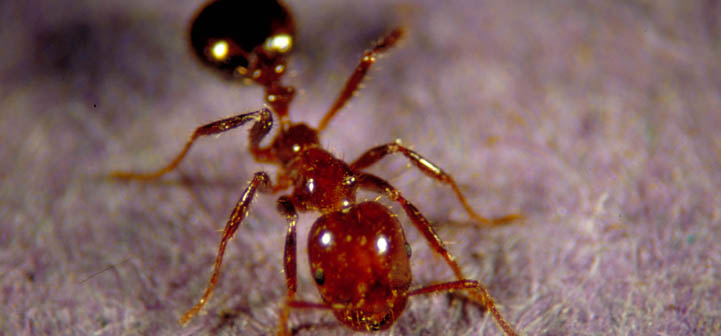A science known as biological taxonomy organizes all of the organisms in the world by classifying and naming them according to characteristics, similarities and their evolutionary relationship to other organisms.
These classifications are frequently ordered by hierarchy, a successive series of categories. In the case of fire ants, they are included in the broad group consisting of all animals (Kingdom Animalia) down to the smallest level of species (invicta).
- Kingdom: Animalia (animals)
- Fire ants are taxonomically classified as animals because they display certain characteristics required to be considered animal:
- They move (locomotion)
- They feed on animals and/or plants (omnivore, herbivore, carnivore)
- They are made up of many cells (multicellular)
- Phylum: Arthropoda (arthropods)
- Fire ants are classified as arthropods because they have:
- Segmented bodies – usually head, thorax, abdomen
- Jointed appendages
- Exoskeleton (hard outer body covering made of chitin)
- Class: Insecta (insects)
- Fire ants are in the class Insecta because they have:
- Six legs – 2 on each of 3 body segments
- Antennae
- May or may not have compound eyes
-
Order: Hymenoptera (ants, bees, wasps, sawflies)
- Membranous wings, but can be wingless
- Development is through complete metamorphosis (worm to pupa to adult)
- Most are capable of stinging
- Eusocialistic (true social insects)
- Family: Formicidae
-
- Bent or elbowed antennae
- Petiole with one or two nodes
- Wingless, though not all are wingless
- Genus: Solenopsis
- Species: invicta and richteri
